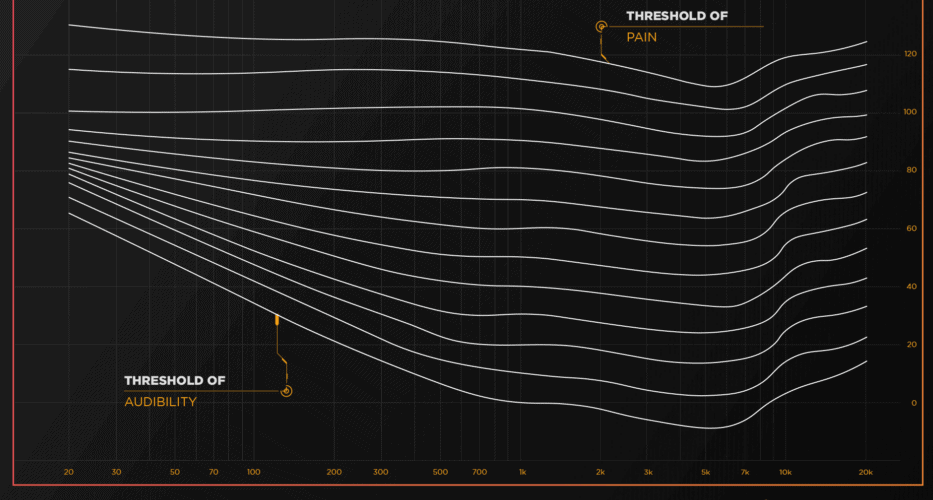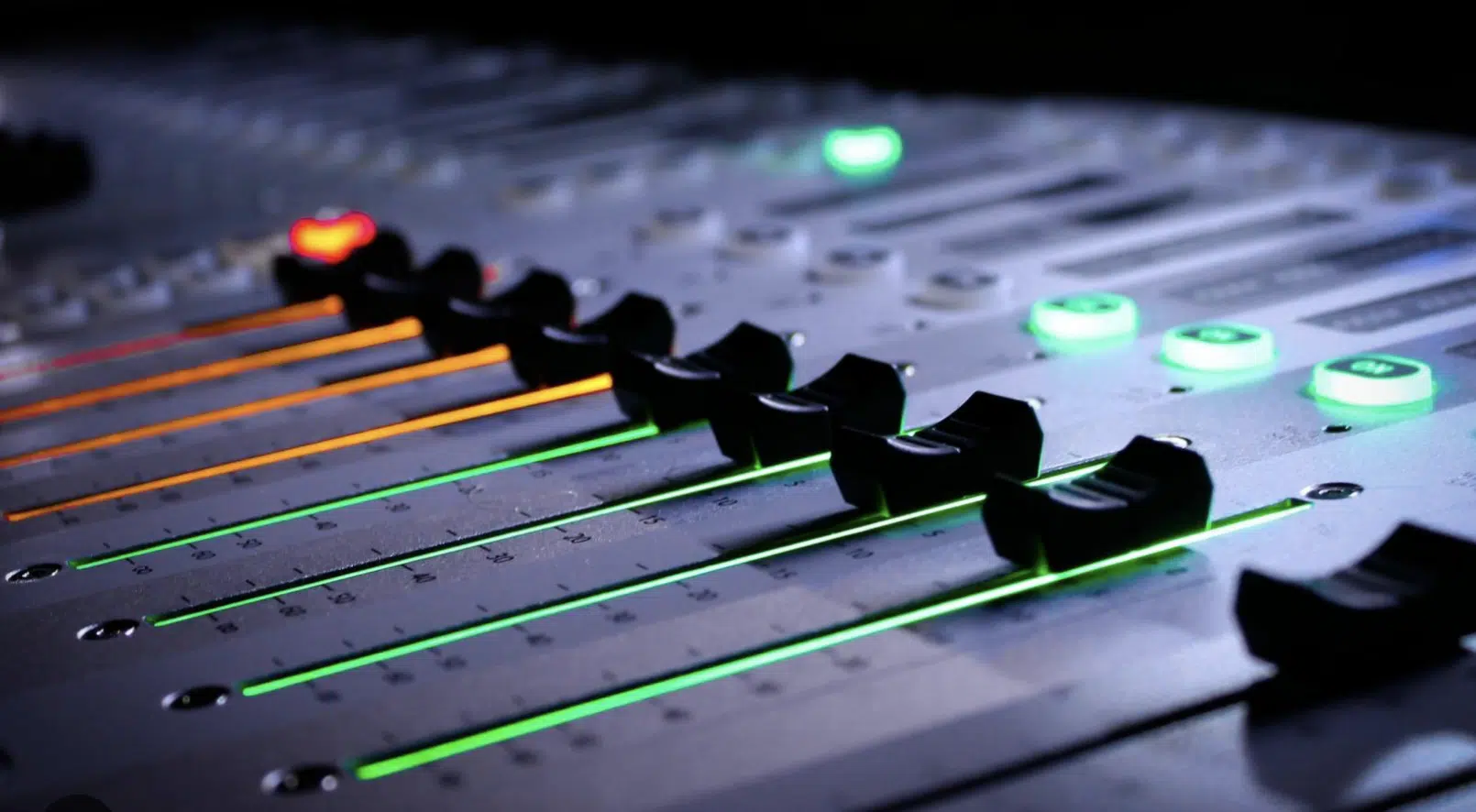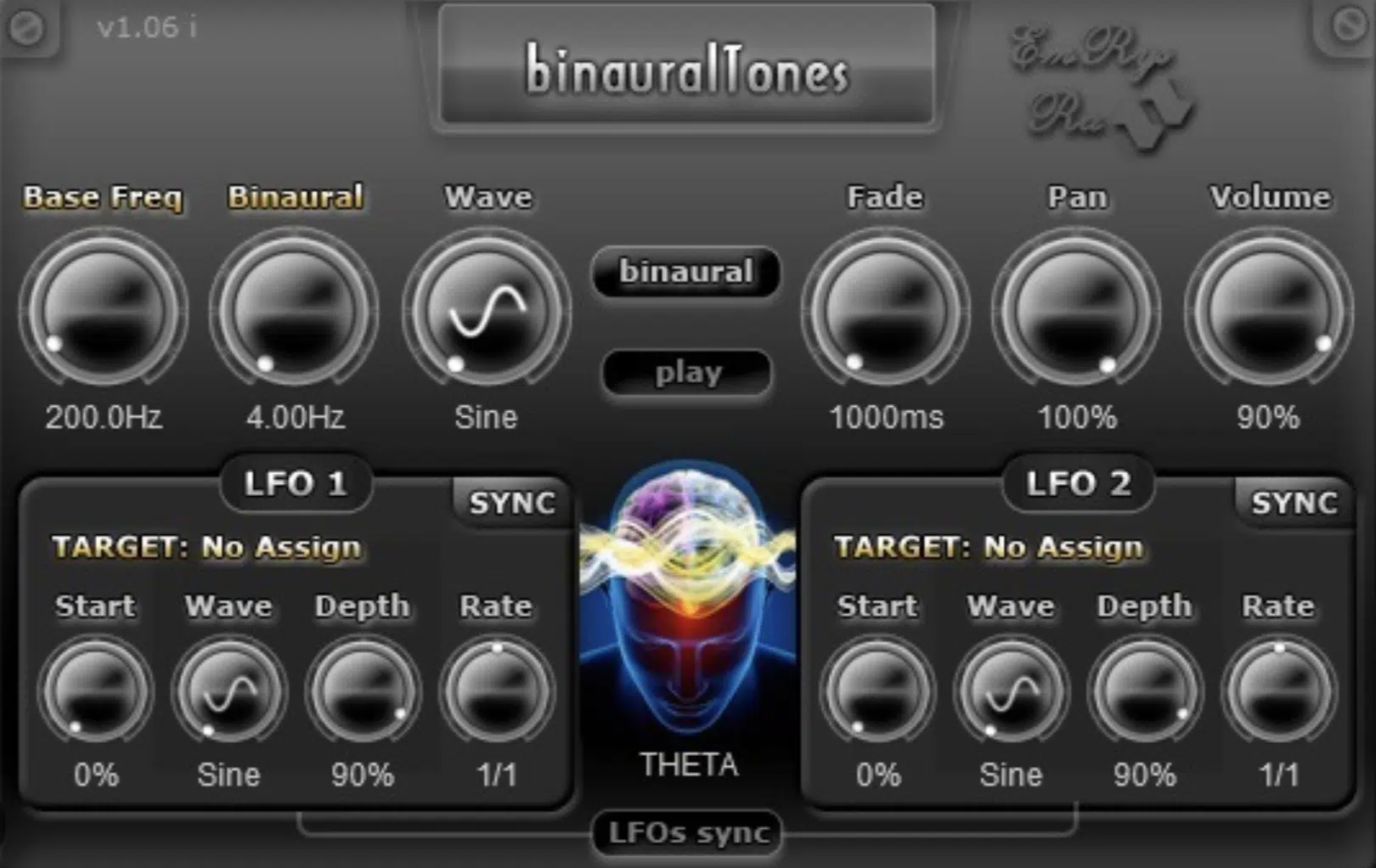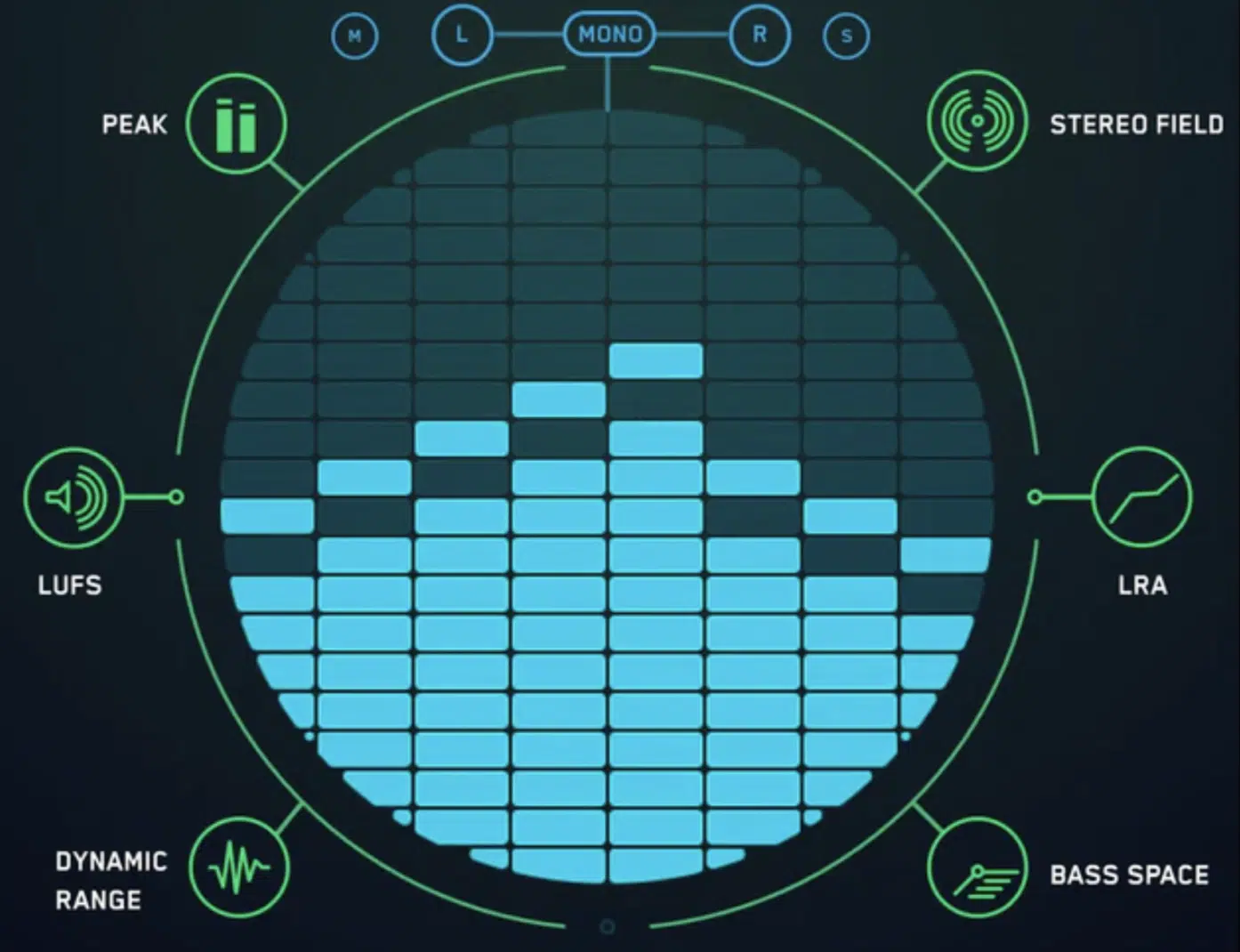Psychoacoustics is a fascinating fusion of psychology and acoustics that explores how we perceive and interpret sound.
It’s key to understanding the emotional impact sound has on humans, and basically uncovers the mysteries behind how sound waves interact with our auditory system for unmatched emotion.
Plus, it dives into sound localization, frequency ranges, and the subtleties of human hearing capabilities altogether.
So, as a music producer, there are countless reasons why knowing about psychoacoustics is super beneficial (like creating soundscapes that feel alive and keeping your listeners hooked on a subconscious level).
It will help you create a memorable auditory experience every single time.
That’s why, in today’s epic article we’ll break down:
- The basics of psychoacoustics ✓
- Sound waves and their properties ✓
- The human auditory system ✓
- How to create better music with psychoacoustics ✓
- The impact of sound frequencies, pitch, and volume ✓
- Sound localization techniques ✓
- Equal loudness curves ✓
- The significance of the human hearing range ✓
- Human perception system basics (+ sound perception tricks) ✓
- Advanced psychoacoustic effects in sound design ✓
By the end, you’ll know everything about psychoacoustics and how to apply its principles to enhance your music production techniques all day.
It will help you make sure all your tracks are truly unforgettable.
And this way, you can successfully manipulate sound in ways that achieve the desired emotional impact, create immersive spatial environments, and create masterpieces.
So, let’s dive in…
Table of Contents
What is Psychoacoustics?

Psychoacoustics combines the principles of psychology and acoustics to understand how we perceive sound.
At its core, it is the scientific study of physiological and psychological responses to sound, including how we interpret:
- Different sound frequencies
- Volumes
- The spatial origin of sounds
For music producers, mastering the principles of psychoacoustics helps you create better music and soundscapes that engage listeners on multiple levels.
It manipulates sound waves to evoke specific emotional responses or to create a unique auditory experience.
The application of psychoacoustics in music production extends beyond sound engineering…
It delves into the intricacies of human hearing and lets you to fine-tune your tracks to align with how sound is naturally processed by the human ear; the inner ear, specially.
This acoustical society knowledge is instrumental in making decisions about sound localization, equal loudness contours, and the frequency range.
It ensures that your musical composition and perceived quality (in the immediate context) is not only pleasing to the ear but also rich in depth and clarity.
Understanding psychoacoustics opens up a new dimension in music production 一one where sound is not just heard but experienced.
By applying psychoacoustic techniques, you can manipulate the perception of sound.
It helps create illusions of space, depth, and even altering the perceived brightness or darkness of a unified tone.
This makes psychoacoustics a powerful tool in the hands of any skilled music producer, enabling them to enhance the emotional impact and immersive quality of their music.
The Science Behind Psychoacoustics
The journey into psychoacoustics requires a foundational understanding of sound waves and the human auditory system. These elements are the building blocks of how sound is produced, transmitted, and perceived.
-
Understanding Sound Waves

Sound waves are mechanical vibrations that travel through a medium, such as air or water, reaching our ears as fluctuations in air pressure.
They’re characterized by their frequency, amplitude, and phase.
Each on plays a pivotal role in how we perceive sound (perceived quality).
- Frequency 一 Determines the pitch of a sound
- Amplitude 一 Influences its subjective loudness
- Phase 一 Affects the sound’s timbre and spatial characteristics
In music production and beat-making, understanding these properties allows producers to sculpt sounds that can captivate listeners.
This can range from the deep rumble of a bassline to the crispiness of cymbals.
For example, by manipulating the frequency spectrum, you can emphasize certain instruments within a mix.
This makes sure each element has its place without muddying the overall sound.
This manipulation is a direct application of psychoacoustic principles 一 allowing producers to create mixes that are both balanced and dynamic.
Plus, sound waves interact with each other and their environment; leading to phenomena such as interference, diffraction, and reflection.
These interactions can significantly affect how a sound is perceived in different spaces.
By applying psychoacoustic knowledge, you can simulate or enhance these natural phenomena, creating immersive soundscapes that mimic real-world listening environments.
Or, entirely new auditory experiences altogether.
If you’d like to learn everything the frequency spectrum, we’ve got you covered.
-
The Human Auditory System

The human auditory system is a seriously magical biological engineering phenomenon, capable of processing a wide range of sounds from the gentlest whisper to the roar of a jet engine.
It consists of:
- The outer ear 一 Which captures sound waves
- The middle ear 一 Which amplifies the vibrations
- The inner ear 一 Where these vibrations are converted into electrical signals that the brain interprets as sound
Understanding this system is essential for music producers, as it influences how sound is perceived and can guide the mixing and mastering process.
For instance, the phenomenon of the auditory masking effect, where louder sounds can make it difficult to hear softer ones within the same frequency range, is a crucial consideration in mixing.
You can use this knowledge to separate instruments by pitch or spatial positioning, ensuring that each element of the mix is clearly audible.
-
Sound Frequencies, Pitch, and Volume

Frequency, pitch, and volume are fundamental concepts in everyday life if you’re a music producer, directly influencing the listener’s experience.
Frequency refers to the number of sound wave cycles per second, measured in Hertz (Hz), and it determines the pitch of the sound.
Higher frequencies sound higher and lower frequencies sound lower.
Pitch is the musical interpretation of frequency, essential for creating melodies and harmonies that resonate with listeners.
Volume, or loudness, is determined by the amplitude of the sound waves and is measured in decibels (dB).
When you expertly manipulate these elements, it will help you create music that is not only technically sound but also emotionally compelling.
For example, adjusting the frequency range of a musical composition can alter its mood, making it feel brighter or darker.
Carefully controlling volume can increase its dynamic range 一 adding tension and release that captivates listeners.
By understanding how the human ear perceives changes in frequency and volume, you can use psychoacoustic principles to enhance the clarity and impact of your music.
Techniques, such as equalization (EQ), are tools that directly apply psychoacoustic knowledge.
It can help mold the sound to fit your desired emotional and auditory impact.
For instance, EQ can be used to adjust the balance between different frequencies, ensuring that bass frequencies don’t overpower the mid and high frequencies.
It creates a fuller, clearer mix when played across various playback systems.
-
Pro Tip

Dynamic range compression, another tool informed by psychoacoustics, helps in maintaining a consistent volume level throughout a track.
This technique is particularly useful in music production for controlling the loudness of different elements.
It makes sure that quieter details are heard while preventing louder sections from becoming overwhelming.
Core Concepts of Psychoacoustics in Music Production
Psychoacoustics offers a wealth of concepts that can transform music production, making it more engaging and emotionally resonant. Understanding things like what’s called sound localization and how sound perception influences music production is going to give you a super unique edge in your tracks. So, let’s dive in.
-
Sound Localization and the Spatial Aspect of Sound

Sound localization is the listener’s ability to identify the origin of a sound in three-dimensional position/space.
This psychoacoustic principle is crucial in music production for creating a sense of spatial depth and positioning in a mix.
By manipulating the stereo field and using techniques like panning and reverb, you can place sounds in specific locations.
It will, again, make the listening experience more dynamic and immersive.
An example of what’s called sound localization in action is the use of panning to separate instruments in a mix 一 giving each its own space in the stereo field.
This helps achieve clarity and enhances the listener’s sense of immersion, as they can perceive the music as if they were surrounded by the instruments.
-
Equal Loudness Contours

Equal loudness contours, like the Fletcher Munson Curve, illustrate how the human ear’s sensitivity to different frequencies changes with volume.
This concept is super important for music producers when mastering tracks.
It ensures that your tracks maintains its intended balance and emotional impact at any listening volume.
By understanding equal loudness contours, you can apply equalization adjustments that compensate for the ear’s variable sensitivity across the frequency spectrum.
It resultsin a mix that sounds balanced and consistent at both low and high volumes.
For example, at lower volumes, the human ear is less sensitive to very low and very high frequencies.
A music producer might boost the bass and treble frequencies during mastering to ensure that the track maintains its fullness and detail when played quietly.
-
Frequency Range and Human Hearing Range (+ Tips for Music Producers)

The human hearing range depends on the specific person…
It typically spans from 20 Hz to 20 kHz, but this range can vary among individuals, as everyone can hear sound slightly differently.
Music producers must consider this variability to ensure their music is accessible and enjoyable for all listeners.
A deep understanding of the frequency range and human hearing range allows producers to optimize their music for clarity and impact.
It will help you avoid frequencies that are uncomfortably high or inaudibly low.
Focus on the midrange frequencies, where human hearing is most sensitive, to ensure that the vocals and instrumental details are clear.
Additionally, testing mixes on various sound systems can help you identify and adjust audible frequencies that may become problematic on less capable playback systems.
To create a mix where listeners can easily detect sound nuances, it’s essential to understand the minimum frequency difference that the human ear can distinguish.
This awareness helps in fine-tuning your track so that even subtle changes fall above the hearing threshold.
It ensures that your audience can hear sounds in full detail and appreciate the richness of your music.
NOTE
When mixing, consider the ability of the perception system to isolate sound sources when dealing with varying noise levels.
By carefully adjusting the intensity levels of your tracks, you ensure that listeners can hear each element distinctly.
This balance is crucial, especially in dense arrangements 一 allowing each single sound source to be heard clearly without being masked by the overall noise level.
-
Sound Pressure and Human Perception

Sound pressure level, measured in decibels (dB), directly impacts our perception of loudness.
You canleverage this knowledge to manipulate the perceived loudness of your tracks to create a dynamic range that keeps listeners engaged.
Understanding the relationship between sound pressure and human perception is key to mastering.
It allows producers to achieve a balanced mix that conveys the intended emotional intensity without causing listener fatigue.
For instance, carefully managing the dynamic range can prevent a track from sounding too compressed 一 preserving the natural fluctuations in loudness that convey emotion and energy.
Techniques such as automated volume adjustments and selective compression can be used to maintain the natural dynamics of a performance.
While simultaneously ensuring that all elements of the mix are clearly audible.
-
Pro Tip

Sound perception is at the heart of better music creation.
It’s not just about the notes and rhythms, but how these elements are experienced by the listener and engage brain activity.
Psychoacoustics teaches us that different frequencies, volumes, and spatial placements can dramatically affect a listener’s emotional response.
By manipulating these aspects, you can create musical compositions that resonate more deeply with audiences.
For example, the use of high frequencies can add brightness and clarity to a track, making it feel more uplifting.
Conversely, emphasizing lower frequencies can give a sense of power or solemnity.
A producer skilled in psychoacoustics might use these insights to create a song that begins with a somber, bass-heavy verse before transitioning to a bright, high-frequency chorus.
It guides the listener’s emotional journey through the song and helps them to hear the various complexities.
Plus, the sound perception of rhythm and tempo can be influenced by the interplay of sound waves.
A technique known as “phantom rhythm” can be created by carefully placing sounds at specific intervals.
With it, you can suggest a tempo or rhythmic pattern without it being explicitly played.
This can create a more engaging and complex listening experience, as the audience’s brain fills in the gaps 一 making them an active participant in the music.
-
Enhancing Emotional Impact through Sound (Tapping into Human Emotions)

Music’s power to evoke deep feelings is unparalleled, and psychoacoustics can help you tap into its full potential and help you recognize human emotions.
Sound frequencies, volume, and texture all play a role in conveying emotions.
For instance:
- A gradual increase in volume (crescendo) 一 Can build anticipation and excitement.
- A sudden decrease (diminuendo) 一 Can convey surprise or sadness.
One notable application of psychoacoustics in evoking emotions is the use of dissonance and consonance.
Dissonant sounds, which create a sense of tension and instability, can evoke feelings of anxiety or unease.
Consonant sounds, which are harmonious and pleasing to the ear, can induce feelings of happiness and calm.
You can leverage these sound perception principles to create a desired emotional effect, such as using dissonance to heighten the drama in a song’s bridge before resolving to consonance in the chorus for a satisfying release.
Another technique is the strategic use of reverb to simulate different acoustic environments.
You’ll hear that a dry, closely mic’ed vocal can create a sense of intimacy and vulnerability.
While adding reverb can create a sense of space and grandeur 一 potentially evoking feelings of awe or nostalgia.
Creating Depth and Space in Mixes

In the mixing stage, psychoacoustics is key to creating depth and space, giving each element of the track its own distinct place in the mix.
This can be achieved through the use of stereo imaging techniques to spread sounds across the stereo field 一 creating a wider, more immersive listening experience.
For instance, a producer might pan rhythm guitar slightly to the left and a keyboard to the right, while keeping the vocals centered.
This not only prevents the instruments from competing for the same sonic space but also mimics the way sounds are distributed in a live setting.
It enhances the realism and depth of the recording.
Equalization (EQ) is another critical tool as we touched upon, allowing you to carve out sound frequencies that might cause instruments to clash.
By applying a high-pass filter to non-bass instruments, you can eliminate low-frequency mud, ensuring the mix is clear and each instrument is distinctly audible.
NOTE

When mixing multiple sounds, it’s crucial to be mindful of the upper limit of loudness to ensure that listeners can comfortably hear sound without discomfort.
Additionally, incorporating pure tones can help in achieving clarity.
This is especially true in a dense mix, but always consider the upper limit to prevent any loud sound from overpowering the delicate balance of your track.
-
Pro Tip: Psychoacoustic Effects for Sound Design

Psychoacoustics also plays a pivotal role in sound design, where producers create or manipulate sounds for use in:
- Music
- TV
- Film
- Video games/VR
- Etc.
By understanding how the brain interprets sound, sound designers can create audio effects that are perceived in specific ways by the listener.
For example, the Shepard tone is an auditory illusion that seems to ascend or descend in pitch endlessly without ever reaching a pinnacle.
You’ll hear this effect used in music and film scores to create a feeling (perception) of constant tension or elevation because it draws listeners into a perpetual climb or fall.
Most adults and children react, and emotionally respond to this perception technique, so make sure to utilize it whenever possible.
-
Skeuomorphic Sound: Its Use in Modern Production

Skeuomorphic sounds, which mimic the acoustic characteristics of mechanical devices or natural sounds, can add a unique layer of realism and nostalgia to digital music production.
For instance, the sound of tape hiss or vinyl crackle, when subtly layered over a track, can evoke a sense of warmth and vintage charm.
It taps into listeners’ nostalgia of that desired analog sound.
A skeuomorphic sounds can also bridge the gap between digital and acoustic music production 一 offering a way to humanize electronic elements and make them feel more organic.
By thoughtfully incorporating a skeuomorphic sound, you can enhance the emotional depth and complexity of your music.
Skeuomorphic sound appeals to listeners’ subconscious associations with certain sounds (so, in turn, it’s super beneficial).
Bonus: Tools & Software for Psychoacoustic Analysis
If you’re aiming to create better music, having access to the right tools and software is indispensable for applying psychoacoustic principles effectively. Modern technology offers endless options designed to analyze and manipulate various sound, regardless of the sound source, in ways that align with our understanding of psychoacoustics. It can enhance the overall emotional impact and clarity of music. So, let’s break down
-
Spectrum Analyzers and EQ Matching

Spectrum analyzers are super beneficial tools for visualizing the frequency content of audio material.
They provide invaluable insights into the balance of sound frequencies within a mix, highlighting areas that may need adjustment.
For instance, a spectrum analyzer can reveal an excess of low-frequency energy that could muddy the mix, so you can apply EQ cuts in the problematic range.
EQ matching software takes this a step further by analyzing the frequency spectrum of a reference track and applying an EQ curve to another track to match the tonal balance.
This can be especially useful in mastering, where the goal is to hear that a track sits well within a complex musical context.
For example, matching the EQ curve of a track to that of a well-mastered reference track can help achieve a professional, cohesive sound.
It’s actually great for overcoming beat block as well.
-
Spatial Audio and Binaural Plugins

Spatial audio tools and binaural plugins enable producers to create immersive soundscapes that simulate real-life listening environments.
These tools manipulate psychoacoustic cues to create the illusion of three-dimensional space in headphones.
It gives off a more engaging and lifelike auditory experience.
For instance, binaural plugins can simulate the effect of sounds coming from various directions 一 including above or behind the listener.
It does so by mimicking the way sound waves interact with the human head and ears.
This technology can be used creatively in music production to design soundscapes that envelop the listener, transporting them into the world of the music.
-
Dynamic Range Processors

Dynamic range processors, such as compressors and limiters, are essential for controlling the loudness and dynamic impact of better music.
By understanding the psychoacoustic principle of any auditory masking effect, you can use these tools to ensure that all elements of a mix are heard clearly.
All without various sounds being drowned out by others for the perfect noise level and acoustic environment.
For example, sidechain compression can be applied to a bass track, triggered by the kick drum, causing the bass to momentarily dip in volume with each kick drum hit.
You’ll hear that this creates a pumping effect that enhances the rhythmical relationship between the kick and bass.
It also ensures that the kick drum cuts through the mix, a technique you’ll widely hear used in electronic dance music.
Psychoacoustics: Final Thoughts
Psychoacoustics is more than just a scientific study.
It’s a gateway to deeper understanding and connection with your audience through sound.
By leveraging the principles of how humans perceive sound, you can create music that not only sounds good but feels good, resonating on an emotional level with listeners.
Plus, it will enhance your skills in mixing, mastering, and sound design, elevating your music production to new heights.
That’s why, as a music producer, these principles discussed today are super important.
They can help you produce soundscapes with precision and emotion 一 ensuring your tracks stand out in the crowded music landscape like a professional.
To seamlessly integrate the principles of psychoacoustics into your music production process, you’ve got to check out Zen Master (free!).
Zen Master is designed with the innovative producer in mind.
It offers intuitive controls and features that align with the psychoacoustic principles to enhance the depth, clarity, and emotional impact of your mixes.
Whether you’re fine-tuning the spatial aspects of your sound or ensuring that lo-fi/vinyl feel, Zen Master provides the functionality to make these complex tasks easy.
You won’t find a more versatile and flexible free plugin around.
So, go and embrace the power of psychoacoustics in your music production process.
This way, you can create experiences that listeners won’t just hear, but feel in their soul (and that’s how legends are born).
Until next time…







Leave a Reply
You must belogged in to post a comment.